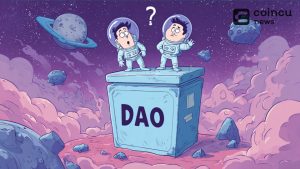$104190.378
At CoinCu News, we give both basic and in-depth articles on the latest news in the cryptocurrency and blockchain sectors.
Author
News
Jupiter DEX Freezes DAO Votes Until 2026 for Growth
Jupiter DEX halts DAO voting until 2026 to refocus on growth, amid governance criticism and
Jun
Coinbase First US Exchange to Secure EU MiCA License
Coinbase becomes the first US crypto exchange fully authorized by the EU through MiCA licensing,
Jun
Parataxis Buys Bridge Biotherapeutics to Launch Bitcoin Treasury in Korea
Parataxis Holdings secures controlling stake in Bridge Biotherapeutics to create South Korea’s first institutional Bitcoin
Jun
Thailand SEC Eyes Crypto Rule Overhaul, Seeks Public Input
Thailand SEC launches consultation to revise crypto asset listing rules; aims to boost transparency and
Jun
Norway to Temporarily Ban New Crypto Mining Centers
Norwegian government announces a temporary ban on energy-intensive cryptocurrency mining to conserve electricity for other
Jun
Everything Blockchain Makes Bold $10M Bet on SOL, XRP & TAO
Everything Blockchain Inc. invests $10M in SOL, XRP, SUI, TAO, and HYPE, launching the first
Jun
Ripple vs SEC Ruling May Arrive Earlier Than Expected Amid Legal Momentum
Judge Torres may rule on the Ripple-SEC case sooner than the August 15 deadline, as
Jun
Trump’s National Security Meeting Focuses on Bitcoin Strategy
President Trump leads a National Security meeting focusing on U.S. Bitcoin reserves and digital asset
Jun
People’s Bank of China and HKMA Launch Cross-Border Payment System
Mainland China and Hong Kong connect fast payment systems enhancing economic activities and financial status.
Jun
[tptn_list how_old="7" limit="5" title_length="0" heading="0" show_date="0" ]
[tptn_list how_old="30" limit="5" title_length="0" heading="0" show_date="0" ]




















